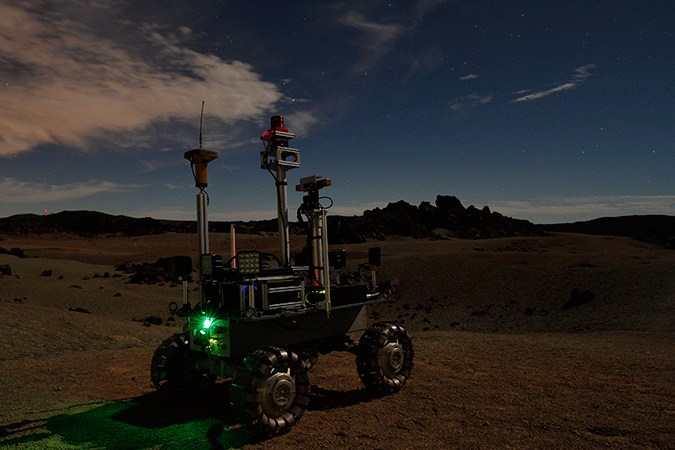Tenerife, a “Lunar Analog” territory

In early June GMV’s team went to Teide (Tenerife) to conduct the “FIELD-TEST SITE TRADE-OFF” of the lunar rover prototype. This represents the penultimate phase of the LUCID trials (Lunar Scenario Concept Validation and Demonstration), the GMV-led ESA project in which a ROS-based software suite has been developed to meet all the needs of the Field Test Rover System (FTRS).
The first test scenario was GMV’s own site, before moving on to Dehesa de Navalvillar a little further north from Madrid in Colmenar Viejo. Here an efficiency check was made of the all the rover’s components, including optical cameras, stereovision systems, laser 3D terrain-reconstruction systems and night navigation systems. The trials then moved on to Teide National Park on the Canary Island of Tenerife. Here, the moon-crater-like terrain known as Minas de San José is to be turned into a “Lunar Analog” territory for a few weeks.
The aim of the project is to investigate the lunar poles, looking for frozen methane or water. Teide is therefore the ideal site for these trials, since the lie of the land is pretty similar to what the rover would find in certain areas of the moon.
Definitive sensor tests are being conducted every day at sunset, while also vetting navigation techniques to give the rover operator the best possible information to work with. Also being tested and validated during these trials are the rover’s locomotion, illumination and image-capturing capabilities, all fundamental factors in any lunar exploration mission.
This work takes in field-test specification, the development made for the FTRS, together with the first results from the preparatory tests carried out on GMV’s site. The last project tests will be carried out in September.
The conclusions drawn from this test campaign will boost and enhance ESA’s space race. The bases have also been laid down for researchers’ and scientists’ upcoming projects over the next years.